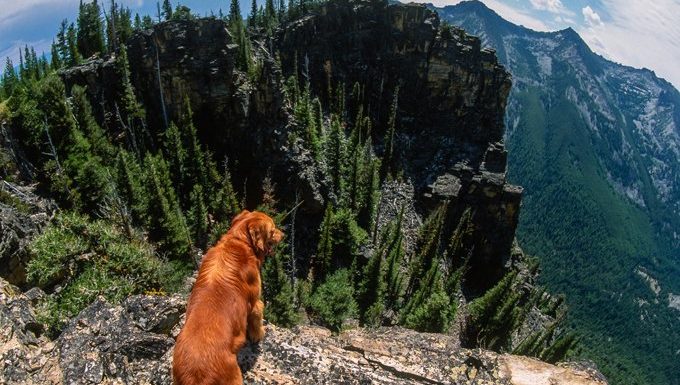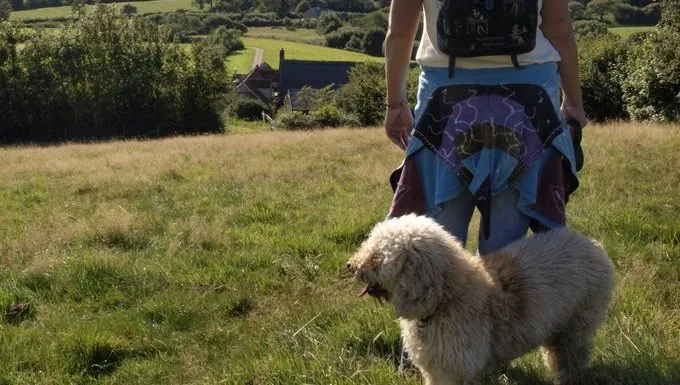
For outdoorsy dog lovers, hiking with a canine companion is the perfect way to spend a weekend.
Getting some exercise while experiencing the majestic natural world is fun on its own, but doing it with your best furry friend at your side elevates the experience to awesome.
Hiking is a great way to bond with your pup, but there are plenty of hidden dangers to consider before venturing into the back country together.
Bikes & Horses
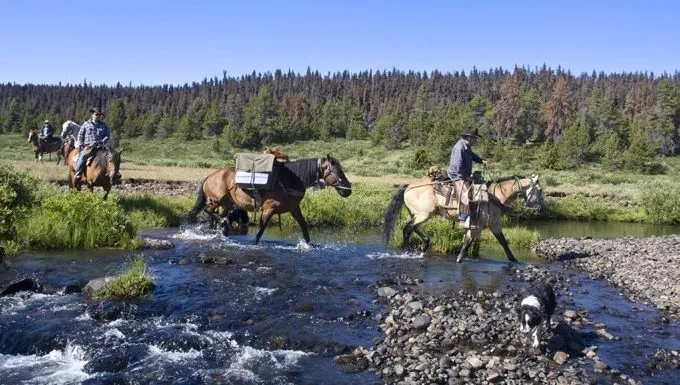
Depending on the trail you choose, hiking may not be the only permitted use. You and your dog could be sharing the trail with mountain bikes, horses, and riders.
According to the ASPCA, hikers with dogs should move to the side of the trail and remain in a sit or stay while bikes or horses pass. If your dog is really distracted by the passersby, consider feeding your pup a few treats to keep them focused.
A dog who chases horses or cyclists could end up badly injured or cause a collision, so it’s best to keep them off the trail or on-leash until they have a reliable sit or stay.
Dehydration

When hitting the trails with your furry hiking buddy, make sure to take frequent water breaks, even if your pup doesn’t seem that thirsty.
Sometimes, dogs don’t want to press pause on the tree sniffing fun long enough to get a proper drink. But skipping the water bowl puts them at risk for dehydration, which can be life threatening.
If your dog begins to seem tired during a hike, get that water bowl out right away, as slowing down is one of the first signs of dehydration in dogs.
Too Much Sun
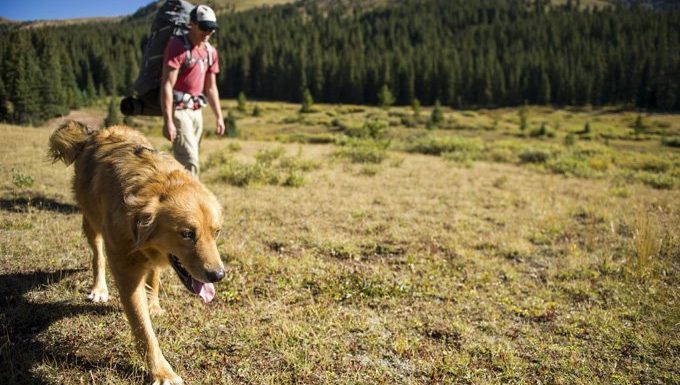
Dehydration, heat stroke, and sunburns can be a trio of trouble during hot hikes. Keep the weather in mind before bringing your dog to the trail. If it’s too hot, don’t take the risk.
If the heat is not extreme enough to stop you from hiking, remember to protect your dog as you would protect yourself. Ask your vet which dog sunscreen they would recommend for your pal, and keep an eye out for the symptoms of overheating.
Excessive panting and difficulty breathing are signs that your dog needs to find some shade and a drink, stat.
Contaminated Water
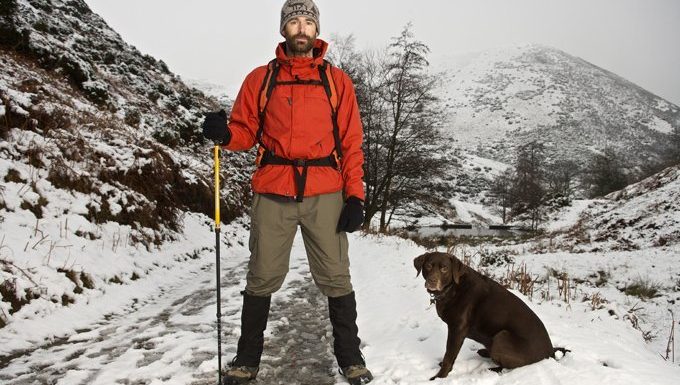
While you do want your dog to drink plenty of water while hiking, it should be water that you’ve brought to the trail, not water they’ve found outside.
Ponds, creeks, rivers, and lakes can be home to diarrhea-inducing parasites, from common Giardia to the more dangerous Leptospirosis, which can cause kidney and liver damage.
Proper hiking preparation is the best way to prevent your dog from picking up a waterborne parasite on the trail. Make sure your dog is up to date on their vaccinations, and train for reliable recall so you can call them back from any nasty water sources.
Open Water

Pre-hike recall training isn’t just important for preventing your pup from drinking pond scum. It could also prevent them from drowning.
Lakes and rivers require a higher level of swimming proficiency than the backyard pool and can prove hazardous to a dog who’s already tired out from the trail.
Waterfalls and hots springs are beautiful and popular hiking destinations, but dogs — and their people — don’t always realize how dangerous they are. Many canine companions have tragically died after going over waterfalls, and in some cases, people have plunged to their deaths while trying to save their pets.
Lives have also been lost to hot springs. Multiple incidents have seen dogs — unaware of the boiling temperatures — dive in, and would-be rescuers have died or suffered burns trying to save them.
Cases like these are why some hiking trails, like those in Yellowstone National Park, ban dogs altogether.
Wildlife

Yellowstone is far from the only national park to ban dogs from the trails for safety’s sake. Wildlife can pose as big a threat as water, and hiking through areas populated by other animals often means your dog will have to hike on leash — if they’re allowed at all.
A study of North American bear attacks suggests that, although some hikers feel safer having an off-leash dog along in the back country, our canine companions may actually attract the bears they so often get credit for chasing off.
To bears and other predators, including mountain lions and coyotes, your beloved pet is just prey. So it’s best to avoid taking dogs into their habitats.
Be Prepared & Pay Attention
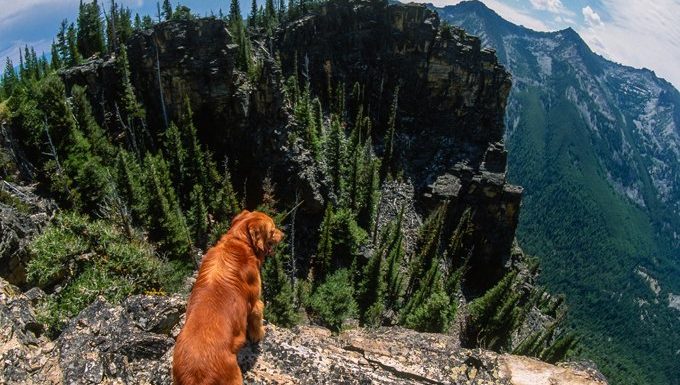
The recipe for a safe, dog-friendly hike is one part preparation, one part avoidance.
Do your research before picking a trail to make sure it’s a good fit for you and your dog. Once you pack up and head out on the trail, you may still come across hazards you hadn’t heard about.
Often times signs will be posted along the trail advising hikers of potential dangers. They can be a bummer, but signs are usually posted for a reason. It’s better to turn back than take a risk with your pup.
If a trail is marked “no dogs allowed,” then there’s probably a very good reason.
Are you an avid hiker? Do you have any helpful tips for others who hike with their dogs? Let us know in the comments below!
